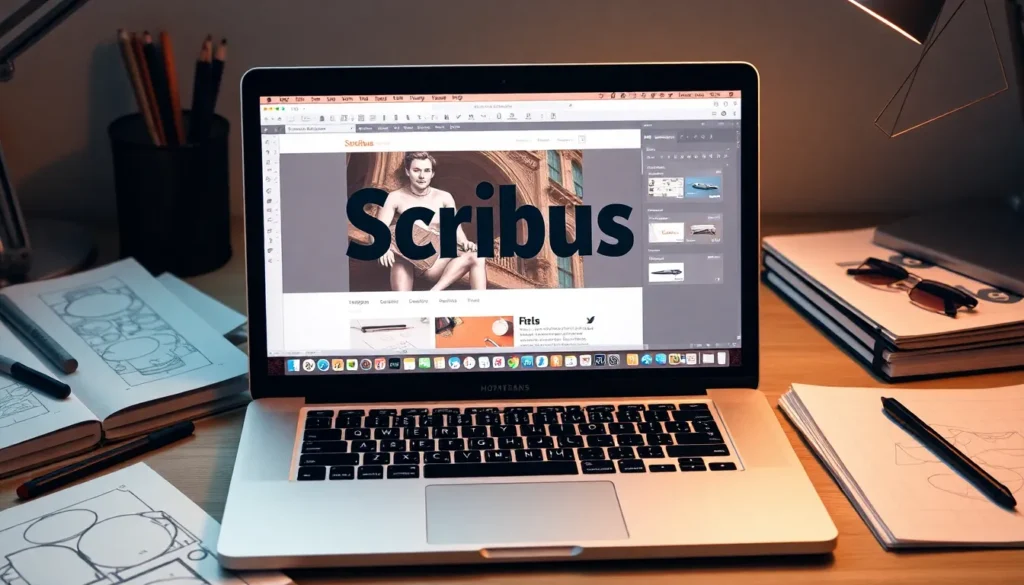Uninstalling software can feel like trying to solve a Rubik’s cube blindfolded, especially when it comes to programs like ShotScribus on a Mac. Whether it’s giving you more headaches than inspiration or just taking up precious space, knowing how to remove it properly is key. After all, who needs clutter when creativity calls?
Table of Contents
ToggleUnderstanding Shotscribus Software
ShotScribus serves as a powerful desktop publishing application designed for creating high-quality documents, brochures, and publications. This software is popular among designers and organizations that demand precision and flexibility in layout design.
Key Features of Shotscribus
ShotScribus boasts several features that make it a valuable tool for users. Users can access advanced layout management capabilities. Templates facilitate quick document creation, while support for vector graphics enhances design quality. The software also includes color management tools, ensuring accurate color representation. Multiple export options allow users to save files in various formats, such as PDF and EPS. Collaborative features enable team members to work seamlessly on projects.
Why You Might Want to Uninstall
Several reasons exist for uninstalling ShotScribus. Users may find that the software doesn’t meet their needs or design preferences. Performance issues can arise, leading to frustration during design processes. Some individuals might prefer alternative software with improved features or a more user-friendly interface. Uninstalling frees up disk space, creating a cleaner environment for other applications. Updates and system requirements may also necessitate software removal, ensuring compatibility with the latest operating systems.
Preparing for Uninstallation

Before uninstalling ShotScribus, ensure all necessary preparations are made. Taking these steps can prevent data loss and ensure a smooth uninstallation process.
Backing Up Your Projects
Backing up projects provides security for important files. Users should locate the default save location for ShotScribus, typically found in the Documents folder. Each file can be copied to an external drive or a cloud storage service for safekeeping. After the backup, it’s wise to double-check the saved files to ensure everything is accounted for. Any unfinished projects that the user may want to complete later should also be backed up, preventing any potential loss.
Checking System Preferences
Checking System Preferences aids in identifying any configurations related to ShotScribus. Users should navigate to the Applications section to locate ShotScribus and observe any remaining settings or integrations. Any system preferences associated with the application can be noted for reconfiguration if another similar software is installed. Furthermore, ensuring that there’s no ongoing usage of ShotScribus is crucial before beginning the uninstallation process. Unused preferences might still linger, so a thorough review ensures a clean slate after removal.
Steps to Uninstall Shotscribus on Mac
Uninstalling ShotScribus on a Mac involves straightforward methods. Users can utilize either the Finder method or Terminal commands to remove the application effectively.
Using the Finder Method
Accessing the Finder provides a simple approach to uninstalling ShotScribus. First, open the Finder and select “Applications” from the sidebar. Next, locate the ShotScribus application in the list. After finding it, drag the application icon to the Trash in the Dock. Emptying the Trash finalizes the uninstallation process. Additionally, users can right-click the application icon and select “Move to Trash” as an alternative. Checking for leftover files in the Library is also beneficial. These files may remain in the Application Support or Preferences folders, so reviewing these locations ensures a thorough removal.
Using Terminal Commands
Employing Terminal commands offers an advanced method for uninstalling ShotScribus. First, open the Terminal application, which can be found in the Utilities folder within Applications. Then, type sudo rm -rf /Applications/ShotScribus.app to initiate the uninstallation command. Entering the administrator password allows the command to execute. Ensure that the correct application path is used to avoid accidental deletion of other files. This method streamlines the process and provides users with a quick alternative for complete removal. It’s crucial to be cautious when using Terminal to prevent unintended system changes.
Post-Uninstallation Cleanup
After uninstalling ShotScribus, it’s vital to perform a cleanup to ensure no associated files remain on your Mac. This step helps reclaim storage space and minimizes potential system conflicts.
Removing Associated Files
Removing associated files involves checking specific locations for leftovers. Start by navigating to the Library folder. Open Finder, hold down the Option key, and select “Go” to find “Library.” Inside, look for folders named “Application Support,” “Caches,” and “Preferences” that may contain ShotScribus files. Delete any folders or files related to ShotScribus. Emptying the Trash afterward finalizes the removal of these remaining components. In some cases, third-party applications like AppCleaner also assist in locating and deleting residual files.
Verifying Successful Uninstallation
Verifying successful uninstallation ensures ShotScribus no longer affects the system. Open Finder and use the search function to check for any remaining ShotScribus files or applications. If results appear, remove them. Additionally, checking the Activity Monitor confirms that no ShotScribus processes are running in the background. Use the search bar in Activity Monitor and type “ShotScribus” to look for any related activities. If the application is no longer listed, uninstallation is successful.
Uninstalling ShotScribus on a Mac can be a straightforward process when approached with the right steps. By following the outlined methods and ensuring all associated files are removed users can maintain a clean and efficient system. It’s essential to back up important projects and check for any lingering configurations related to the software.
This not only frees up valuable disk space but also prepares the system for future software installations. After completing the uninstallation and cleanup users can enjoy enhanced performance and a more organized workspace. Adopting these practices ensures a seamless transition to alternative applications or simply a more streamlined Mac experience.




